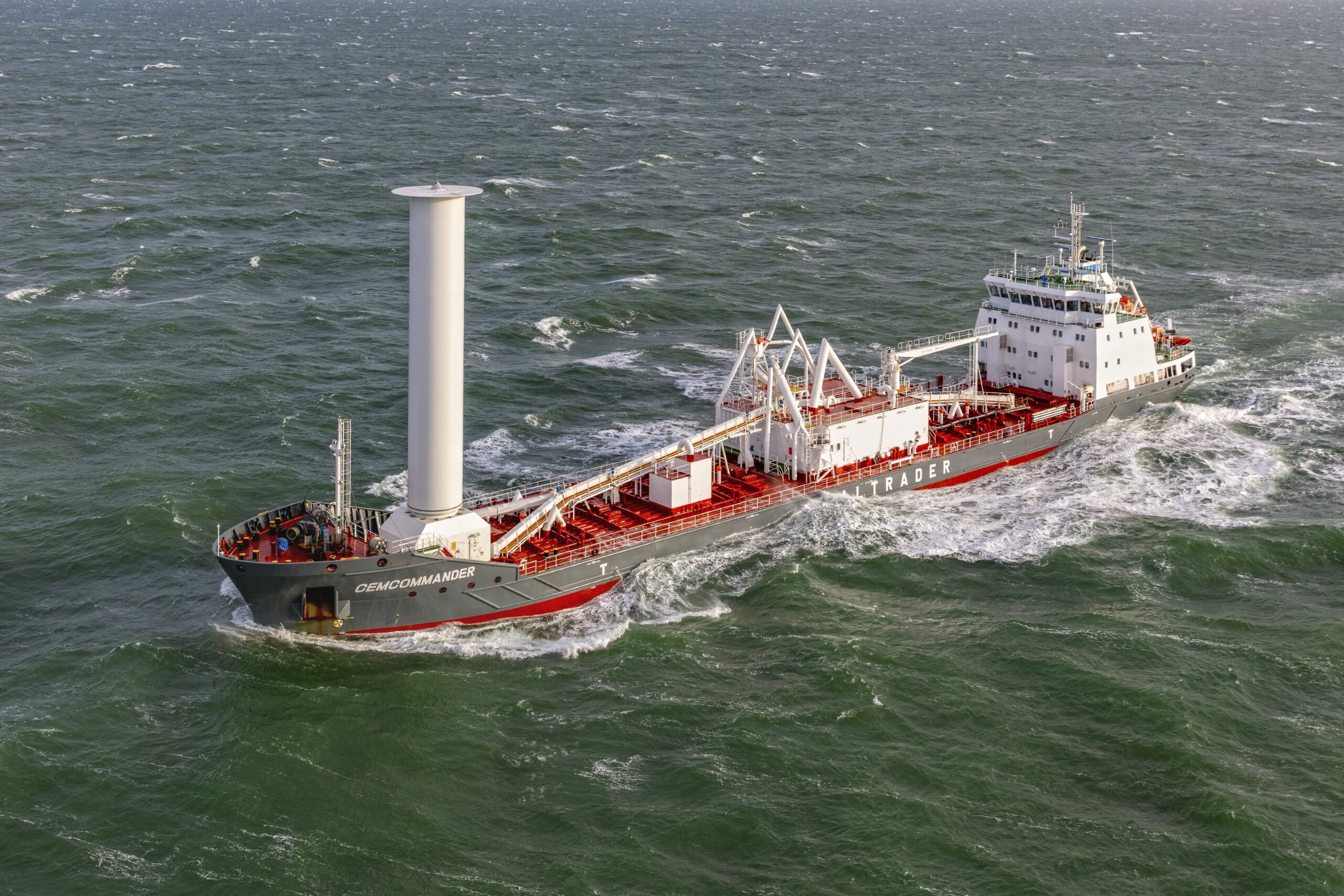They’re becoming more and more common: large sea-going vessels with short, thick masts. These masts rotate on their axis, generating thrust, which saves fuel and reduces CO₂ emissions. A research programme in Delft is exploring this technology.
Cement vessel Cemmcomander uses a rotor sail. (Photo: Norsepower)
Around 80% of global trade is transported by ship. These vessels are, on average, 22 years old, with 98.8% running on fossil fuels, contributing to 3% of human-made CO₂ emissions. That can be done more sustainably.
Much more sustainably. the International Maritime Organisation (IMO) has set ambitious emissions reduction targets: a 30% reduction (compared to 2008 levels) by 2030, 75% by 2040, and net-zero emissions by 2050.
Ways to cut emissions include slower sailing speeds, synthetic fuels (E-fuels) made from green electricity, or wind propulsion. Dr Albert Rijkens (Faculty of Mechanical Engineering) explains that producing enough E-fuels for the shipping industry alone would require 60% of all sustainable electricity. The same goes for road transport and aviation. In other words, E-fuels are not the ultimate solution.
Wind propulsion
Wind propulsion, in one form or another, reduces fuel consumption and could help bridge the expected shortfall in renewable fuels while production struggles to keep up with demand—what’s known as the ‘implementation gap’.
For the past year and a half, TU Delft has been running a research programme on wind propulsion for large ships, also known as Wind Assisted Ship Propulsion (WASP). The initiative—and a generous gift—came from Delft shipbuilding expert Lex Keuning, who passed away in 2023. Last week, around 50 researchers, industry professionals, and policymakers gathered at TU Delft’s X sports and culture centre for the programme’s first joint meeting. Rijkens: “It’s clear that there’s a need to better organise ourselves within the maritime sector.”

More wind-powered ships on the horizon
With an average lifespan of over 20 years, shipowners need to start planning for low-emission vessels now. And that’s already happening, says Louis Stolper, innovation manager at the Royal Association of Dutch Shipowners (KVNR). He points to the International WindShip Association’s ship registry, which shows that in the first nine months of 2024, fifteen wind-powered ships were added—an increase of 50% in less than a year. According to an Offshore Energy article, another 80 ‘wind ships’ are currently on order, with several dozen more planned in the coming years.
Delft research is leading the way
TU Delft’s research programme WASP is ahead of the curve, with eleven PhD researchers working on various aspects of wind propulsion. Their studies focus on the aerodynamics of sails (primarily Flettner rotors so far), the hydrodynamics of hulls fitted with fins and keels, and ship design—conducting full-scale tests under real-world conditions. The research spans the faculties of Aerospace Engineering and Mechanical Engineering.
The International Windship Association (IWA) estimates that wind propulsion can reduce fuel consumption on existing ships by 5–20 percent. Rijkens hopes that through optimisation, this could be pushed to 40–50 percent aligning with IWA’s long-term goals.
To speed up the transfer of lab research into real-world application, Rijkens aims to closely involve policymakers and industry partners. That’s why, at the end of 2024, the Winds4Change programme was launched as part of the Convergence programme Resilient Delta.
Do you have a question or comment about this article?
j.w.wassink@tudelft.nl


Comments are closed.